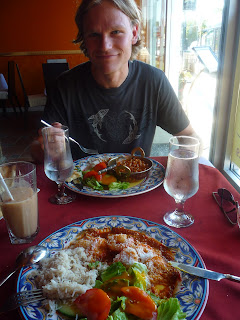Here I am, still in Vancouver :o) Still working at the cheese shop. It's mostly fun and man, if you need anyone to hook you up with wine/cheese pairings - I'm your lady. This december I'm working 6 days a week! Christmas is our busied season.
I'm also still teaching german on Tuesdays. Last Tuesday my students were filmed by a local german TV station as they got a visit from St. Nikolaus, who traditionally visits on.... Dec 6th! :o)
Two weeks ago I was lucky enough to drive down for Thanksgiving. I'd been working so much and at first I was supposed to work over Thanksgiving (having had the "canadian" fake version off in Oct) but luckily my boss changed her mind and I went home (Thanks Allison!!). It was so good to see my family again! I was really missing my mom and dad :o)

























































